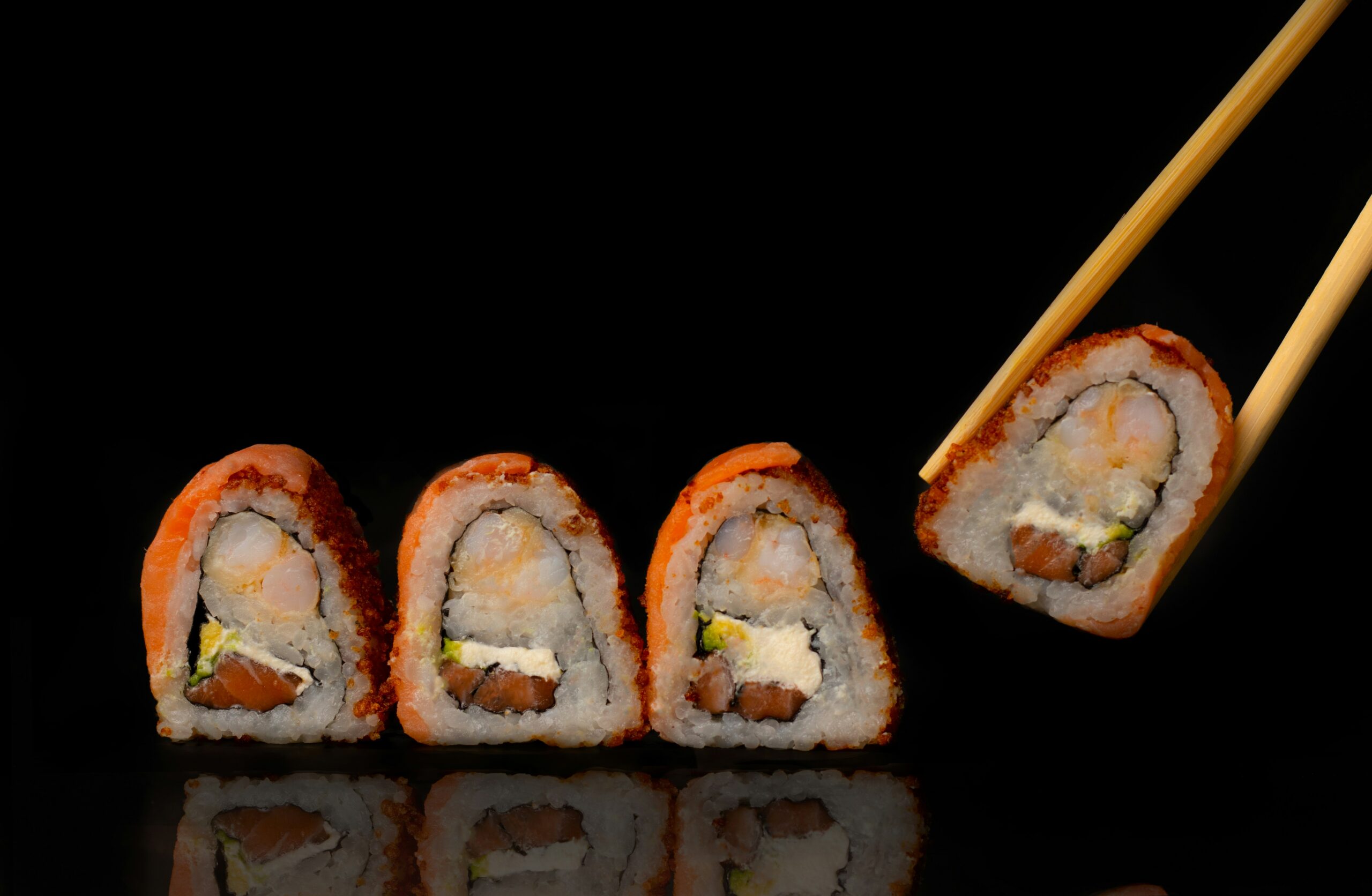In a world where culinary traditions often blur and merge, sushi stands out as a testament to both innovation and tradition. From its origins as a means of preserving fish in ancient Japan to its current status as a global culinary phenomenon, sushi has undergone a remarkable evolution. This gastronomic journey from ocean depths to dining tables encapsulates not just changes in how sushi is prepared and consumed, but also shifts in cultural perceptions and practices surrounding this iconic dish. As we delve into the story of sushi, from its humble beginnings to the present day, we uncover the art, the science, and the evolving ethics that shape its journey. Join us as we explore the evolution of the sushi dish, tracing its path from preservation to plate.
From Ocean Depths to Dining Tables: Sushi’s Journey
Sushi’s journey from the ocean depths to dining tables around the globe is a fascinating tale of culinary innovation. Initially, sushi was a method of preserving fish in fermented rice, where the rice was discarded before consuming the fish. Over time, this technique evolved, and the rice began to be consumed along with the fish. This marked the beginning of sushi as we know it today. The transformation of sushi from a preservation technique to a sophisticated dining experience reflects broader shifts in food consumption practices and culinary techniques. As sushi spread beyond Japan, it adapted to local tastes and ingredients, becoming a global phenomenon. Today, sushi is celebrated for its simplicity and complexity, embodying the harmonious balance between raw fish and seasoned rice. The journey of sushi is not just about the food itself but also about the cultural exchange and innovation that it represents.
Tracing the Origins: Sushi’s Humble Beginnings
The origins of sushi are humble, rooted in the need for preserving fish in ancient Japan. The earliest form of sushi, known as narezushi, dates back to the 4th century BC. This method involved fermenting fish with salt and rice, a technique borrowed from Southeast Asia. Over centuries, this method evolved, and by the Muromachi period (1336–1573), the process of making sushi had shortened, leading to the consumption of the rice along with the fish. This change marked a significant shift towards the sushi we recognize today. The evolution from narezushi to contemporary sushi is a testament to the adaptability and innovation of Japanese culinary traditions. It highlights how a simple method of preservation transformed into a culinary art form that balances taste, texture, and appearance.
Edomae Sushi: Edo Period’s Culinary Gift
The Edo period (1603–1868) in Japan was a time of significant cultural and culinary development, during which Edomae sushi, or Edo-style sushi, was born. This style of sushi, named after the old name for Tokyo, Edomae, which means "in front of Edo," utilized fresh fish caught from Tokyo Bay. Sushi during this time evolved to include vinegared rice and began to resemble the fast-food sushi of today. Edomae sushi’s invention is attributed to the blossoming of urban culture in Edo, where quick, nutritious, and convenient meals were in demand. This era’s culinary innovation led to the creation of nigiri sushi, a style featuring a slice of raw fish atop a compacted mound of rice, a departure from the earlier fermentation-based methods. Edomae sushi set the stage for sushi’s global journey, showcasing the potential for creativity and variation within the confines of traditional sushi making.
The Global Voyage of Sushi: From Japan to the World
Sushi’s global voyage from Japan to the world stage is a remarkable narrative of cultural exchange and culinary globalization. In the 20th century, as Japanese immigrants settled in various parts of the world, they brought their culinary traditions with them, including sushi. However, it was the post-World War II era that marked the significant international spread of sushi, particularly to the United States. Adaptations, such as the California roll, which substituted avocado for hard-to-find toro (fatty tuna), made sushi more accessible and palatable to non-Japanese consumers. This marked the beginning of sushi’s transformation into a global culinary trend. Today, sushi is found in cities across the world, from street food stalls to high-end restaurants, reflecting the diverse ways in which different cultures have embraced and adapted this Japanese delicacy.
Sushi Reimagined: The Fusion Era Begins
The fusion era of sushi began as chefs around the world started experimenting with traditional sushi recipes, incorporating local flavors and ingredients to create innovative new dishes. This period marked a departure from sushi’s traditional roots, giving rise to creations like the dragon roll, spicy tuna roll, and other inventive forms that blend different culinary traditions. Fusion sushi reflects the globalization of food, showcasing how traditional dishes can be reinterpreted through a multicultural lens. It has also sparked debates among sushi purists, who argue for the preservation of traditional techniques and ingredients. Despite these differences, the popularity of fusion sushi continues to grow, demonstrating the dish’s versatility and its ability to evolve and resonate with a global audience.
The Art and Science of Sushi Rice
The foundation of great sushi is its rice—shari or sumeshi—which requires both art and science to perfect. Sushi rice is made with short-grain Japanese rice, seasoned with a blend of vinegar, sugar, and salt. Achieving the right balance of seasoning, along with the texture and temperature of the rice, is crucial for creating the perfect sushi. The rice must be sticky enough to hold its shape, yet each grain should be distinct and separate. This delicate balance is what sushi chefs spend years mastering. The importance of sushi rice in sushi-making underscores the dish’s complexity and the skill required to prepare it authentically. It’s a testament to the meticulous care and attention to detail that defines the art of sushi making.
Nigiri to Nori: Understanding Sushi Types
The world of sushi encompasses a wide range of types and styles, from nigiri to nori-wrapped rolls. Nigiri sushi, consisting of a slice of raw fish atop a mound of vinegared rice, is perhaps the most iconic. Maki rolls, wrapped in seaweed (nori), offer endless variety, from simple cucumber rolls to complex creations with multiple fillings. Sashimi, though not technically sushi since it does not include rice, is often served alongside sushi and focuses solely on the quality and cut of the fish. Other variations include temaki, hand rolls that offer a more casual eating experience, and chirashi, a bowl of sushi rice topped with a variety of fish and seafood. Understanding the different types of sushi is essential for appreciating the diversity and complexity of this culinary tradition.
The Sushi Chef: Culinary Artists Behind the Counter
Sushi chefs, known as itamae, are the culinary artists behind the counter, dedicating years, often decades, to mastering the craft of sushi making. The training to become an itamae is rigorous, beginning with basic tasks and gradually moving on to more complex skills such as selecting and preparing fish, cooking rice, and presenting dishes. It’s a profession that demands not just technical skill but also an understanding of aesthetics, seasonality, and the subtleties of flavor and texture. The relationship between itamae and diner is unique, with the chef often preparing sushi directly in front of the customer, showcasing the transparency and trust that define the sushi dining experience. The itamae’s role is central to the traditional sushi experience, embodying the dedication, artistry, and passion that make sushi such a revered culinary art.
Sustainable Seas: Sourcing Ethical Seafood for Sushi
In recent years, the sushi industry has faced scrutiny over issues of sustainability and ethical sourcing. With the global popularity of sushi contributing to overfishing and environmental degradation, there is a growing movement towards more responsible practices. Sustainable sushi emphasizes the use of seafood from sources that are not overfished or harvested in ways that harm the environment. This includes choosing species that are abundant and farmed or caught using methods that minimize ecological impact. Many sushi restaurants now highlight their commitment to sustainability, offering menus that prioritize eco-friendly seafood choices. This shift towards sustainability not only helps protect marine biodiversity but also ensures that the tradition of sushi can continue for generations to come.
Innovative Sushi: Pushing the Boundaries of Tradition
In the world of sushi, innovation is as much a part of the tradition as the meticulous preparation of rice and fish. Chefs around the world are pushing the boundaries of what sushi can be, experimenting with new ingredients, techniques, and presentations. From sushi burritos to deconstructed sushi bowls, these innovative creations challenge conventional notions of sushi while attracting a new generation of diners. While some purists may question these departures from tradition, it’s clear that innovation is keeping sushi relevant and exciting in a rapidly changing culinary landscape. As sushi continues to evolve, it remains a dynamic expression of both tradition and innovation, reflecting the creativity and adaptability of those who prepare and enjoy it.
The Sushi Etiquette: Dos and Don’ts for Diners
Sushi etiquette, with its emphasis on respect for the chef and the food, is an integral part of the dining experience. From the proper way to use chopsticks to the etiquette of eating nigiri sushi, understanding the dos and don’ts enhances the enjoyment of sushi. For instance, it’s customary to eat nigiri sushi in one bite, and when dipping in soy sauce, the fish rather than the rice should touch the sauce to avoid breaking apart the rice. These and other practices, such as not overusing wasabi and appreciating the order in which sushi is served, reflect the cultural significance and ceremonial aspects of sushi dining. By adhering to sushi etiquette, diners show respect for the artistry and tradition that define this culinary experience.
From Preservation to Plate: The Future of Sushi Cuisine
The future of sushi cuisine promises to be as dynamic and evolving as its past. As global tastes continue to shift and new challenges emerge, sushi is poised to adapt and thrive. Innovations in sustainable seafood sourcing and culinary techniques are paving the way for a future where sushi remains true to its roots while embracing change. The ongoing global fascination with sushi ensures that it will continue to evolve, blending tradition with innovation in ways that surprise and delight. Whether through the continued sustainability movement, the exploration of new flavors and presentations, or the enduring appeal of traditional sushi, the journey from preservation to plate continues. As sushi moves into the future, it carries with it the rich history and culinary artistry that have made it a beloved global cuisine.
Sushi’s evolution from a simple method of preserving fish to a complex and globally revered culinary art form is a journey that mirrors broader trends in food culture, sustainability, and global exchange. As sushi continues to evolve, it remains a powerful symbol of the way traditions can adapt and flourish in new contexts. From its humble beginnings to the innovative creations that grace modern plates, sushi’s story is one of resilience, artistry, and continuous transformation. As we look to the future, the essence of sushi—as a bridge between past and present, simplicity and complexity, local and global—promises to inspire and nourish generations to come.








